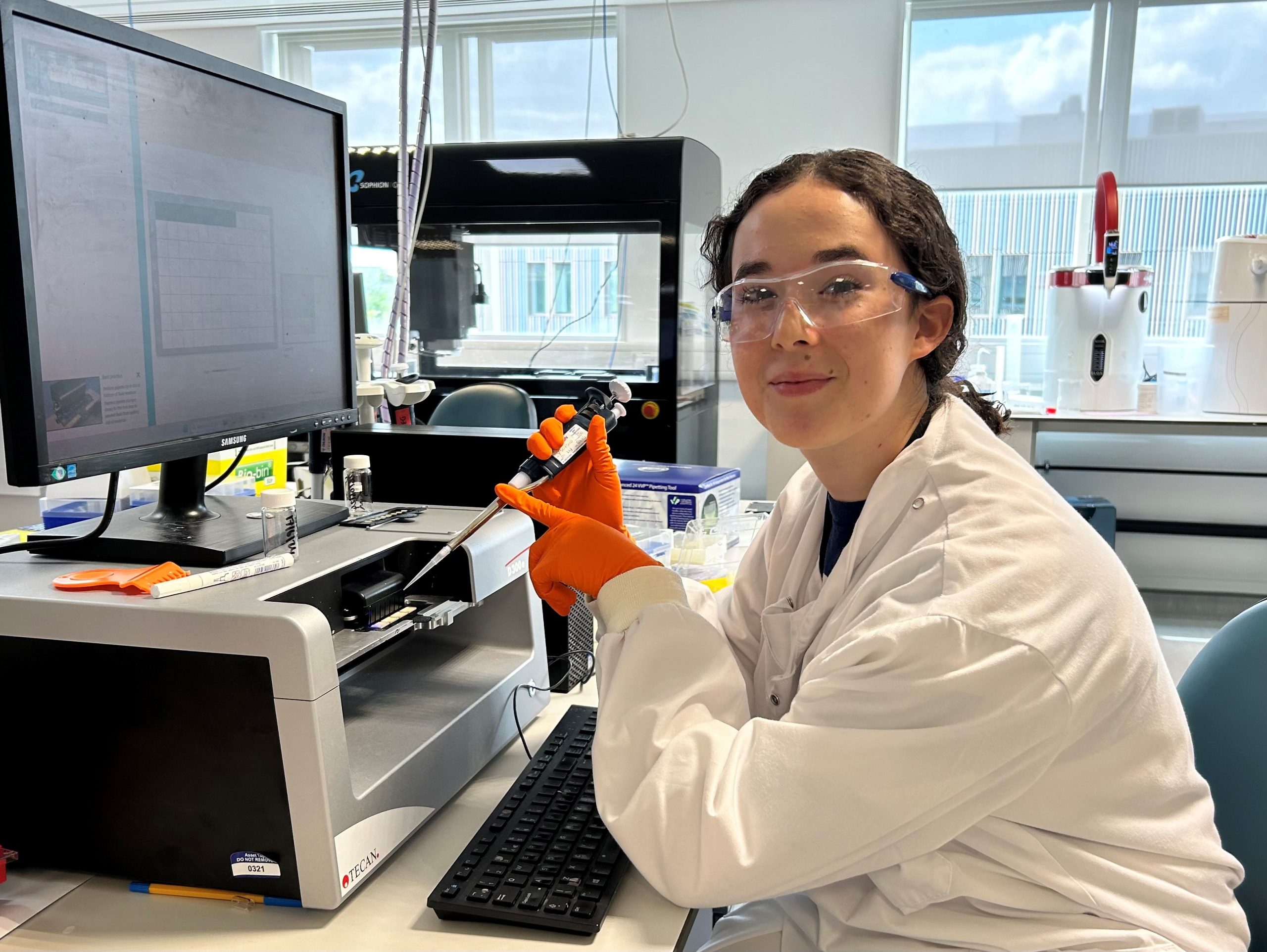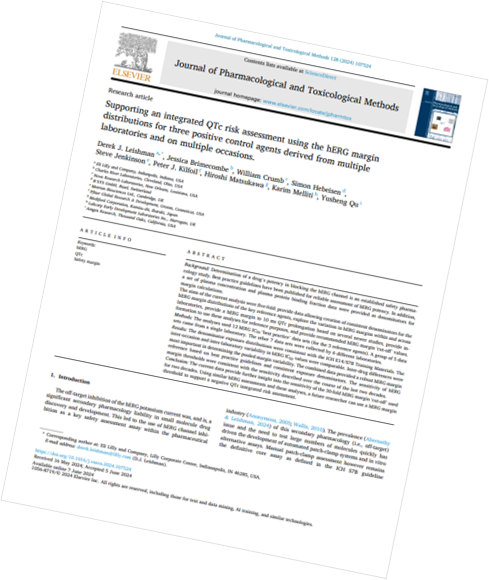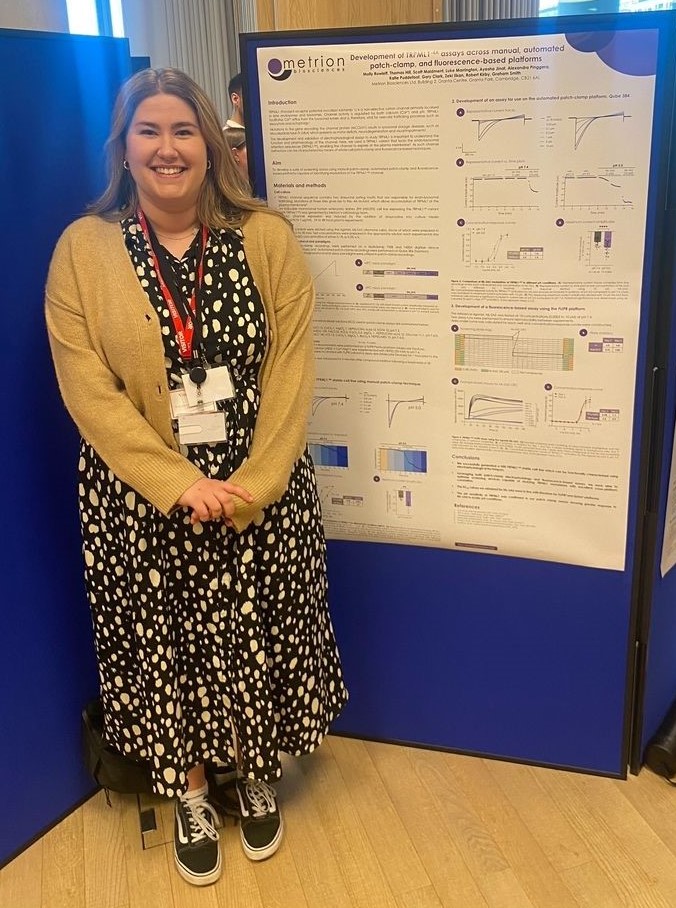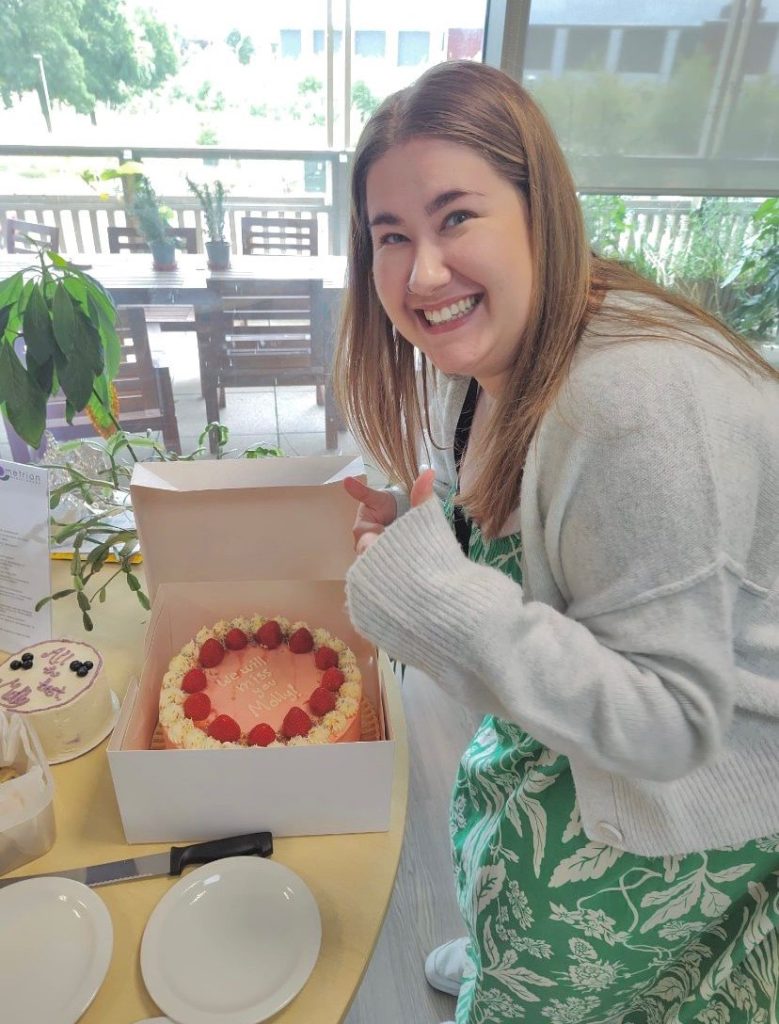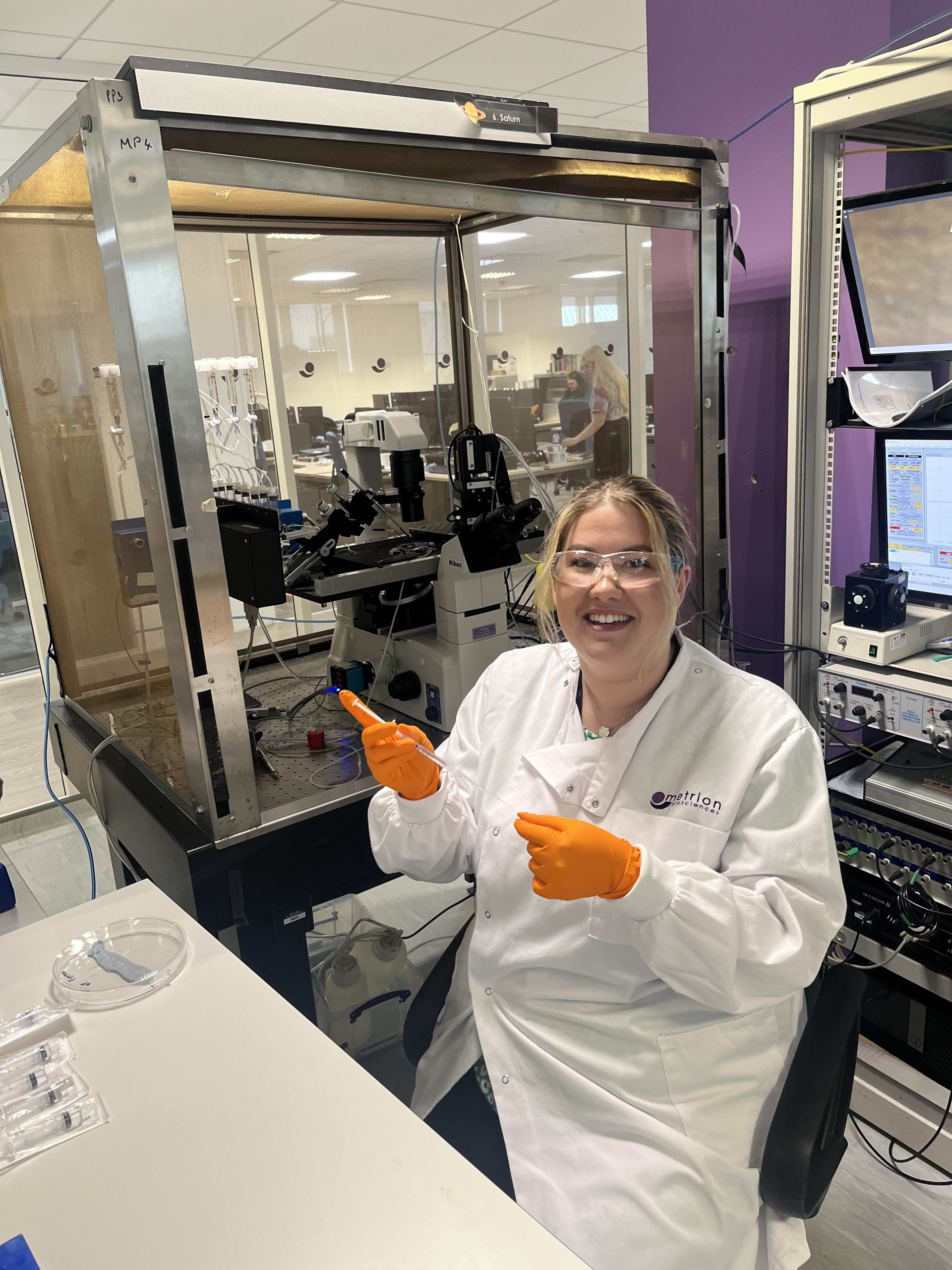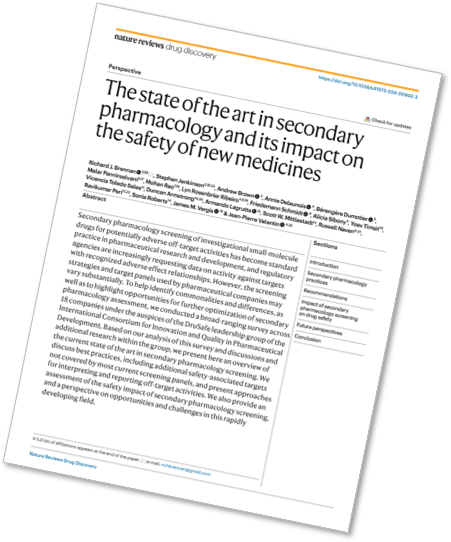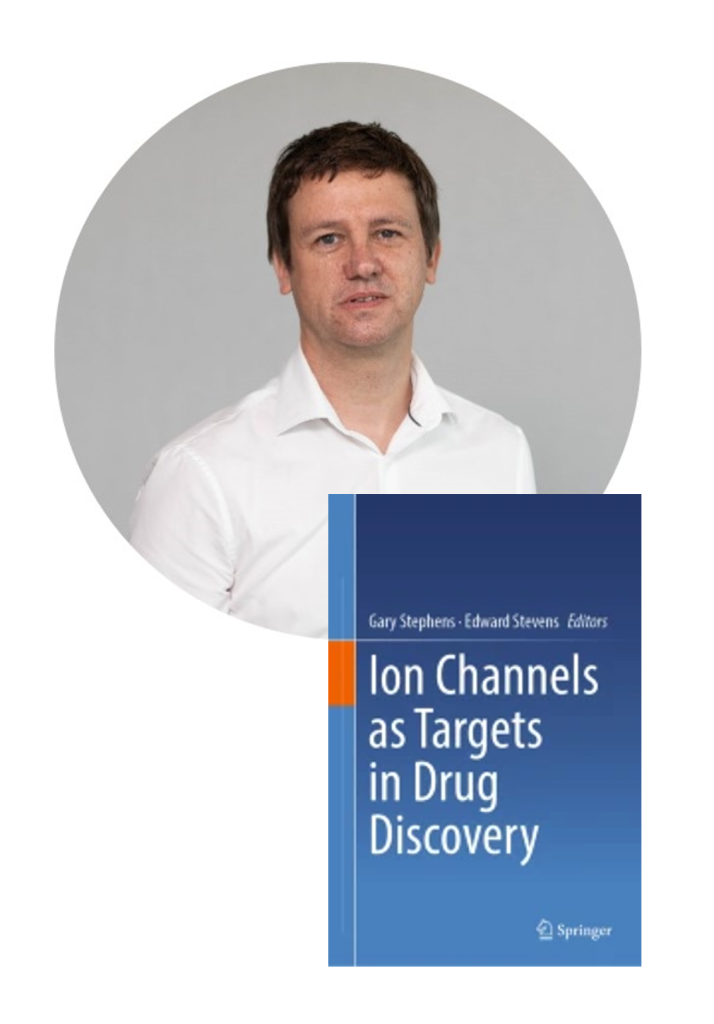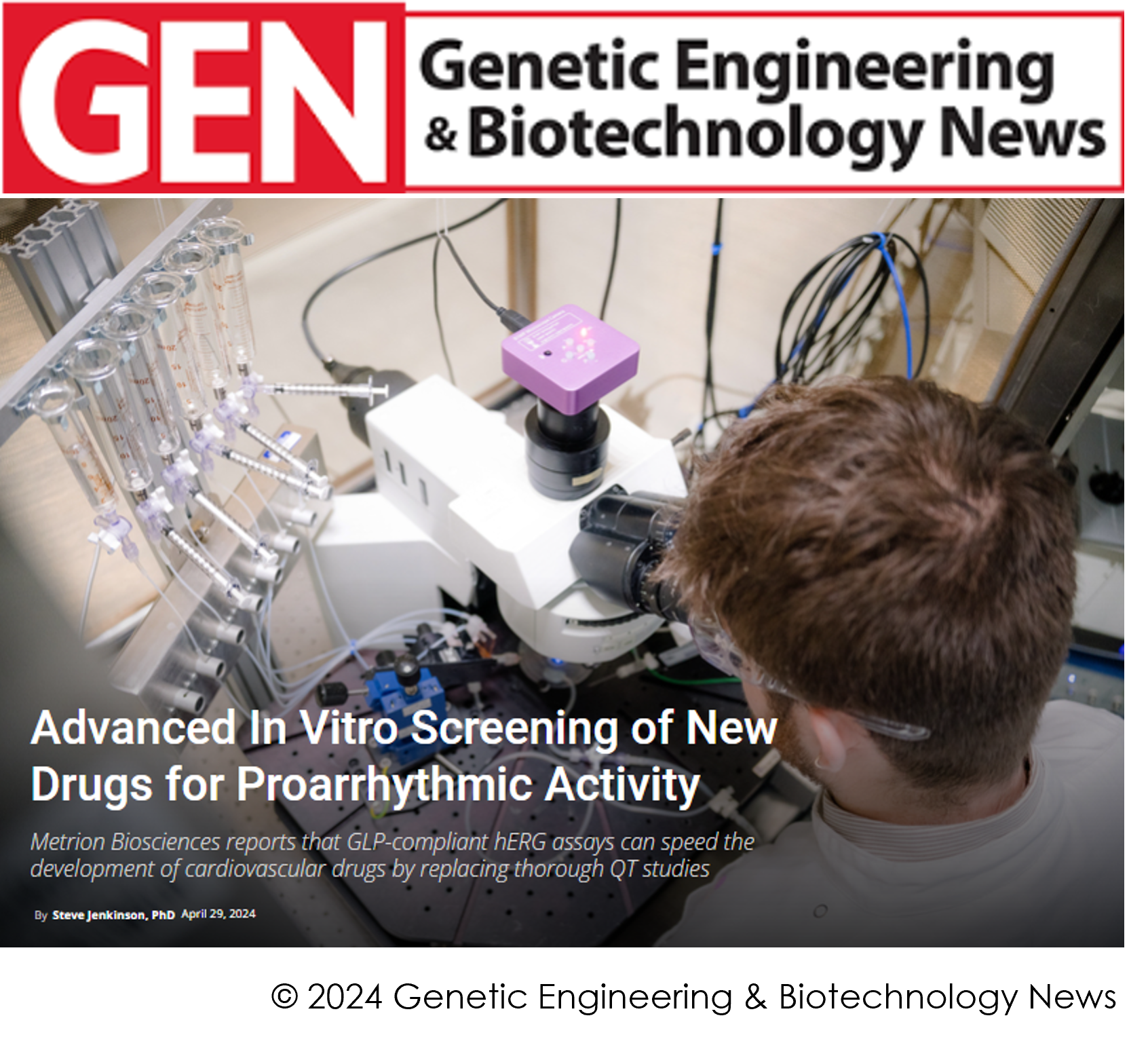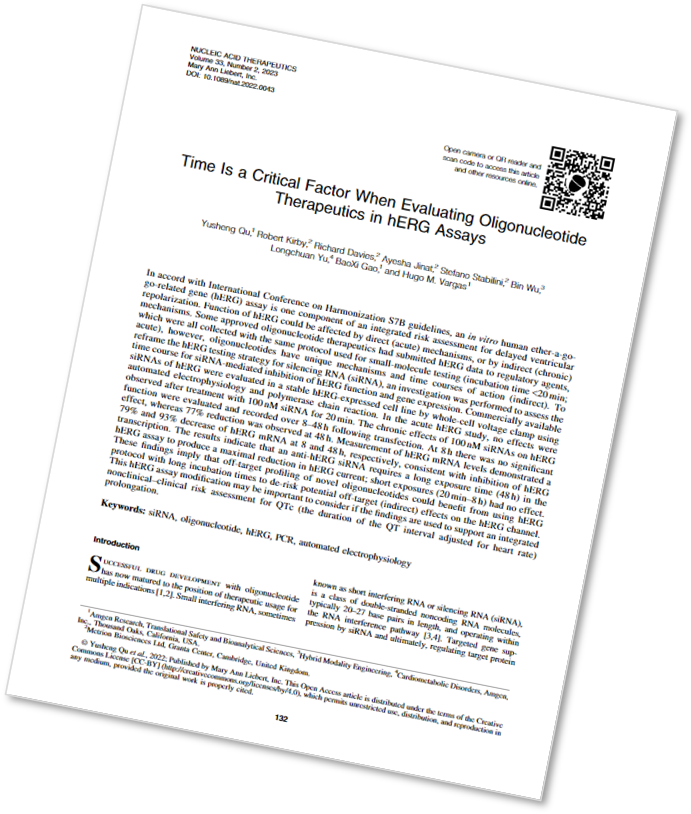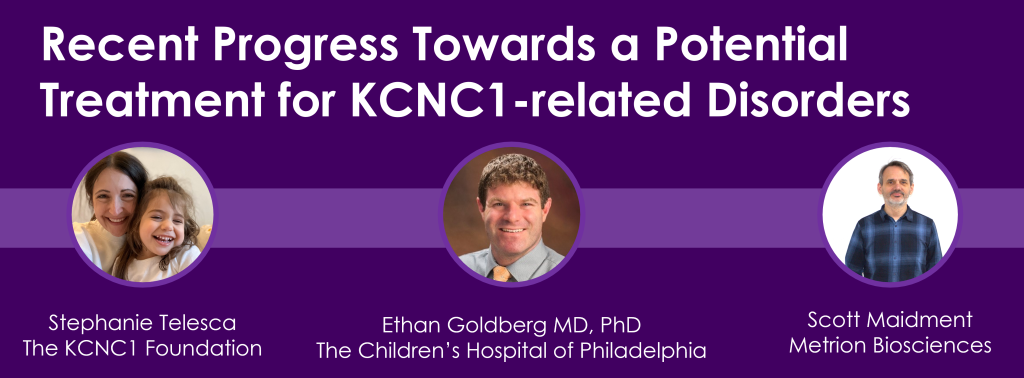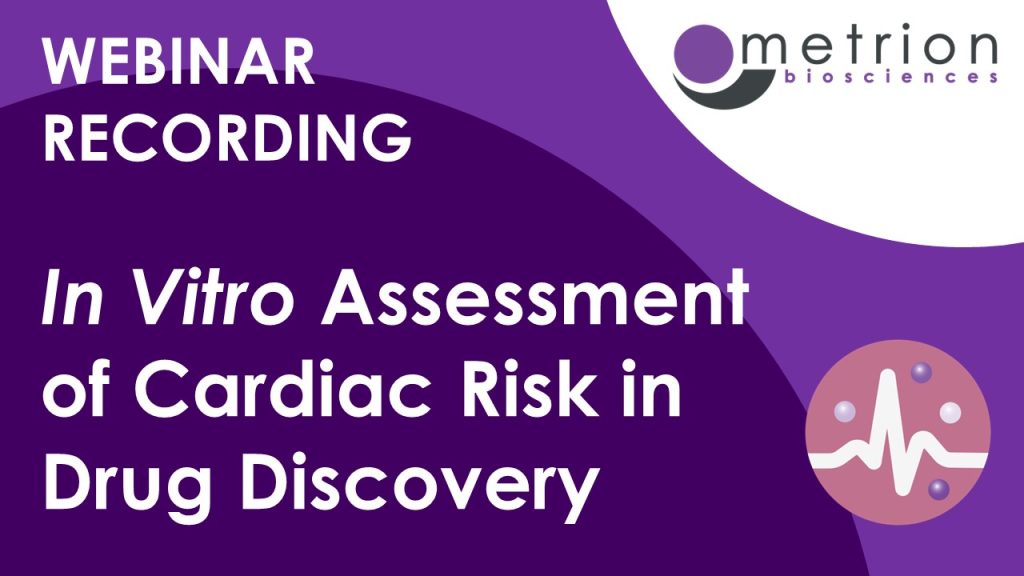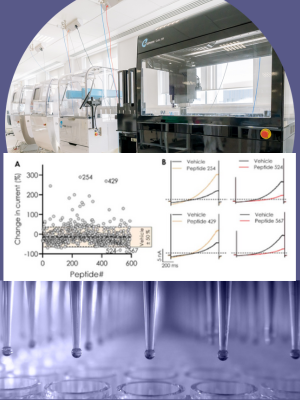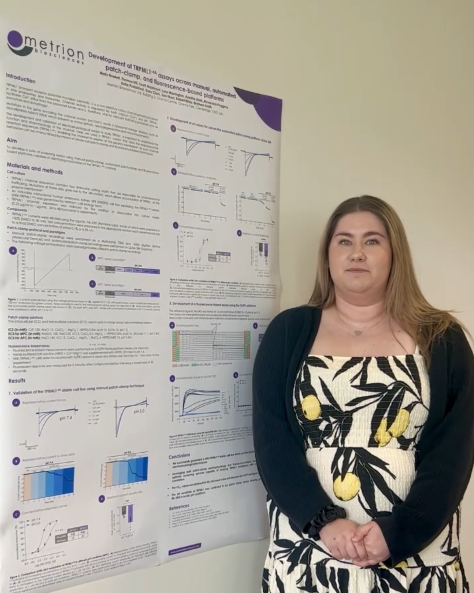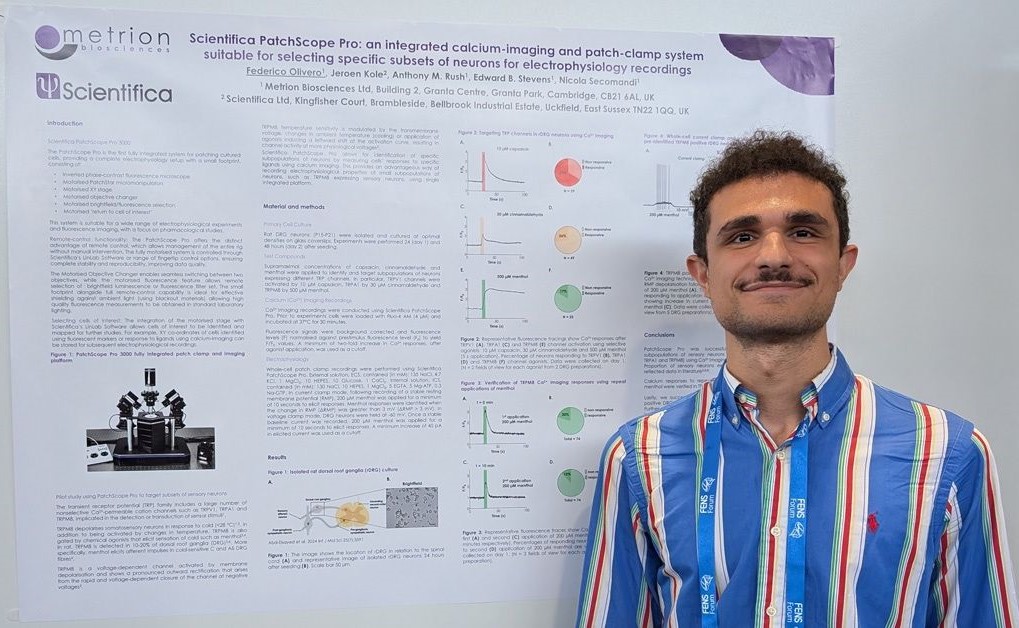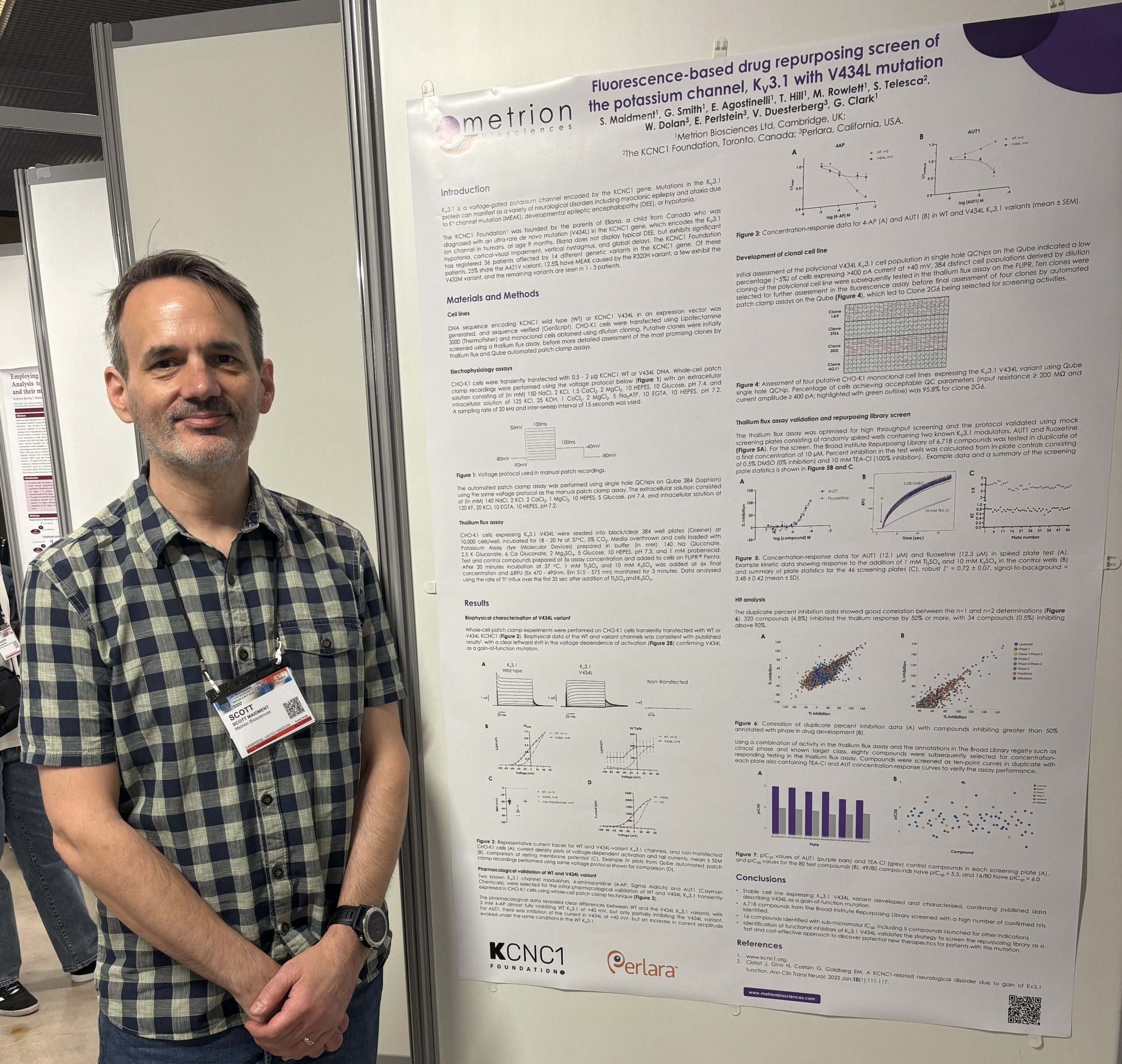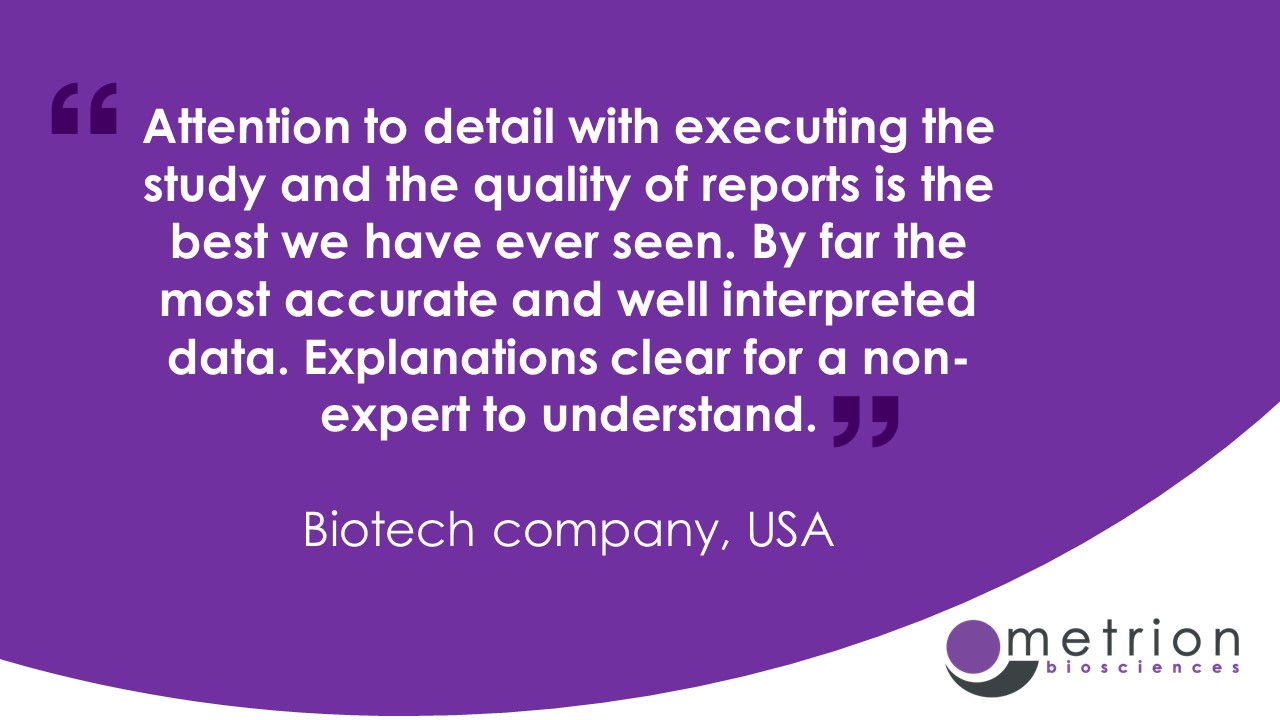By Beth Sharp, Industrial Placement Student, Metrion Biosciences
I am currently studying Biomedical Sciences at the University of Manchester. Through my previous years of education, I enjoyed studying biology and engaging in practical experiments, particularly those with clinical relevance, which ultimately guided my degree selection. With Biomedical Sciences I am able to study human biology to a greater depth and also have the opportunity to acquire more laboratory practice and experience.
During the last two years at university, I became interested in the neuroscience and pharmacology modules offered. The modules incorporated molecular biology, exploring existing ion channelopathies and their disease relevance. Ion channel dysfunction has implications in numerous conditions, such as epilepsy or cardiac arrhythmias, giving the research significant importance. Electrophysiological techniques are part of a specialist biological field I have not been previously exposed to, which made the opportunity of a placement with Metrion extremely exciting.
Another reason for choosing Metrion is because they are a specialist ion channel-focussed contract research organisation (CRO), and has service offerings spanning ion channel screening, neuroscience and cardiac safety. Metrion uses automated and manual patch clamp techniques, using specifically developed cell lines. Throughout my industrial placement I will be introduced to a wide range of research projects, learning both specialised electrophysiology and the broader techniques required of a proficient laboratory scientist. This includes the ability to successfully analyse data and form reasonable conclusions.
Assay design and optimisation are essential skills, applicable to every field of science. The adaptability I am learning is a great development opportunity, as assay refinement means you can obtain the most reliable data possible. Additionally, the values of Metrion underpin all of the work that is conducted and the way colleagues work together. Values such as quality and integrity enable the company to function efficiently as a collaborative team. These values are ingrained into the company ethos and create a welcoming environment, allowing for a great opportunity to gain experience as a student in a new area of research. I am thoroughly enjoying my placement and look forward to learning more and embracing the new opportunities for scientific development.
